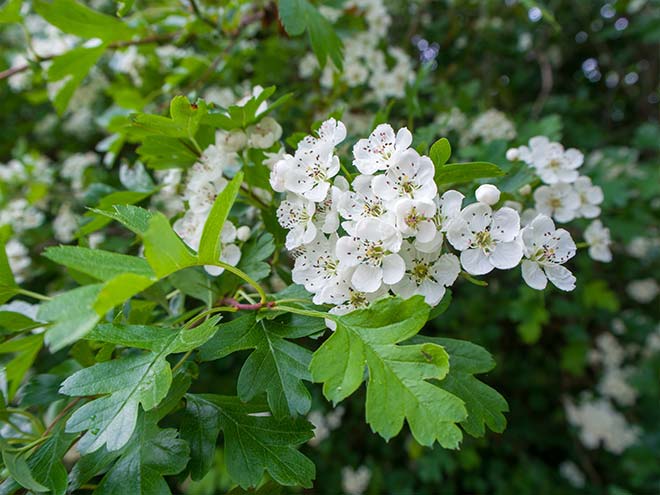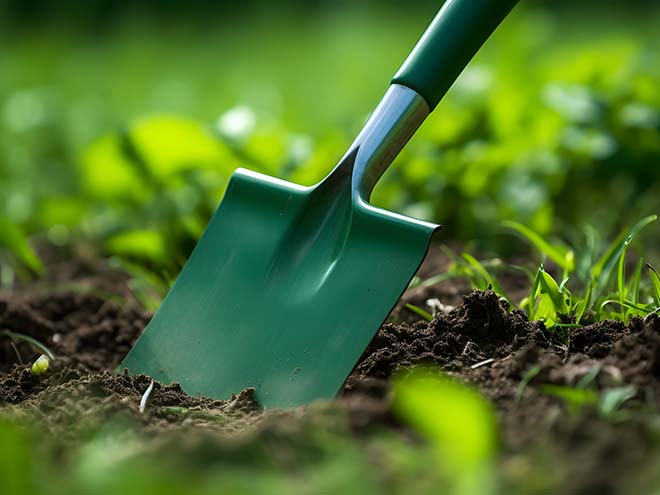Hawthorn Hedging also known as Crataegus monogyna is an attractive, thorny, native deciduous hedging species that provides seasonal interest.
Featuring white blossom and red berries in the autumn, hawthorn hedge plants are vital to birds and other UK wildlife.
Choose from our most popular varieties of Hawthorn Hedging plants, available in a range of sizes and root types.
Hawthorn, Quickthorn, Whitethorn or May Hedging also known as Crataegus monogyna is a popular thorny, deciduous hedging species that provides seasonal interest, with pure white flowers in the spring, followed by attractive green foliage
Growth rate: Medium 20-40cm per year
Overall height: Medium up to 5 metres
Position: Exposed, Full Shade, Full Sun, Sheltered, Coastal
Root Types: Bare Root, Pot Grown, Root Balled
Our team are on hand to help answer your questions!
info@hedgingplantsdirect.co.uk
Opening times
Monday - Friday : 7:30am - 4:30pm
Saturday & Sunday: 10am - 2pm
We are also open 10am to 2pm on bank holidays
Hawthorn Hedges, scientifically known as Crataegus monogyna, are a popular choice among garden enthusiasts and landscapers for their robust nature, tapered shape and aesthetic appeal.
Characterised by their dense, thorny structure and abundant clusters of white or pink blossoms, these hedges not only provide solid, year-round privacy but also serve as a welcoming habitat for various species of wildlife.
They are native to the UK and have a rich history intertwined with folklore, serving both utilitarian and symbolic purposes.
These hardy plants with sharp thorns adapt well to various soil and climatic conditions, making them an ideal choice for hedges across different geographies.
Hawthorn hedges exhibit a moderate to fast growth rate, typically gaining approximately 30-60 cm annually.
This makes them a practical option for individuals desiring prompt establishment of a mature and full hedge.
However, it's noteworthy that the speed of growth can be influenced by factors such as soil fertility, sunlight exposure, and watering routines.
Therefore, for achieving optimal growth rates, maintaining appropriate care and favourable conditions is vital.

There are two main root types of Hawthorn hedge plants available in the UK, bare root plants and pot grown plants. You can pre order your bare root hedges before the lifting season, and have them delivered from November onwards.

Bare root hawthorn hedging is a cost-effective and environmentally friendly option for planting hedges.
These plants are grown in the ground, then lifted and delivered without any soil around their roots, hence the term "bare root". This method allows for easier and cheaper transportation and planting.
It is important to note that bare root hawthorn hedging should ideally be planted between November and March, when the plants are dormant, to ensure optimal growth and survival.
The hardy nature of the hawthorn hedge makes it well-suited to this method of planting, and with the correct aftercare, these hedges can establish rapidly, creating a dense, flourishing barrier.

Pot Grown Hawthorn Hedging offers a versatile planting choice for those seeking immediacy and flexibility.
Unlike their bare root counterparts, pot grown hawthorn plants can be purchased and planted throughout the year, making it an ideal option for landscapers with demanding schedules.
These plants are grown in containers and come with a root ball enveloped in soil, ensuring a preserved root system.
This typically allows for a higher success rate upon planting as the plant undergoes less transplant shock compared to bare root plants.

For a step by step process and further information on how to plant Hawthorn hedges, please see our comprehensive hedge planting guide.
The ideal time to plant a Hawthorn hedge is between November and March, during the plant's dormant period. This maximises the plant's chances of establishment and growth. On the other hand, pot grown Hawthorn hedging offers greater flexibility, allowing for planting throughout the year.
However, it's essential to make sure that the plants are given ample water and sunlight post-planting, regardless of the planting period.
Avoid planting during extremely dry, frozen or waterlogged soil conditions as they can hinder the successful establishment of the hedge.

The distance between each Hawthorn hedge plant depends on the root type and size of the plant.
Please refer to our Hawthorn Hedge spacing chart below which contains the correct planting spacing and distances for each root type and plant size, per metre.
Hawthorn hedge plants are not particularly fussy when it comes to soil types, displaying a commendable adaptability to a wide range of soil conditions including wet soils.
It thrives well in most well-drained soils, including clay, sand, loam, and chalk. However, a neutral to slightly alkaline pH is preferable. If your soil is overly acidic, consider adding some garden lime to adjust the pH.
Regarding planting positions, full sun to partial shade is ideal for ensuring abundant flowering and healthy foliage. Nevertheless, Hawthorn hedge plants are pretty resilient and can tolerate more shaded conditions if needed, although this may affect their overall growth and bloom.
Always remember, the key to a thriving Hawthorn hedge is a well-drained soil and an equitable balance of sunlight and shade.
Pruning is an essential aspect of maintaining the health and beauty of your hawthorn hedge. It helps shape the plant, encourages denser growth, and removes any damaged or diseased branches.
Generally, the best time to prune a hawthorn hedge is in late summer, after the plant has flowered.
This is because hawthorn is a spring flowering plant, and pruning it post-flowering allows it to set buds for the next year's blossoms.
For a newly established hawthorn hedge, it's prudent to carry out formative pruning in the first couple of years of planting to encourage a dense structure.
However, for mature hawthorn maintenance pruning should suffice.
This involves removing any unwanted or overgrown branches and thinning out the hedge to allow light and air to penetrate.
Remember, always use clean, sharp tools for pruning to prevent disease spread, and consider wearing protective gloves and clothing, as hawthorn is a thorny plant.
Proper watering and fertilising is vital to ensure the healthy growth and longevity of your hawthorn hedge.
During the initial stages after planting, hawthorn hedge plants require regular watering, especially during dry periods.
Once established, however, young plants in your new hedge are relatively drought-resistant and only require supplemental watering during prolonged dry spells.
A deep watering is preferable as it encourages the development of deep roots which in turn enhances the plant's drought tolerance.
To water deeply, allow a slow trickle of water to penetrate the soil to a depth of about 12 to 18 inches.
As for fertilising, a balanced slow-release fertiliser, recommended for hedges or shrubs, applied in early spring can boost the plant's growth and bloom.
Be sure to follow the manufacturer's instructions when applying. If your soil is poor, you may need to fertilise again in mid-summer.
However, over-fertilising can lead to excessive growth, which requires more frequent pruning, and can make the plant more susceptible to disease and insect problems.
Always remember to water the plant thoroughly after fertilising to help the nutrients seep into the soil and reach the roots.
Keep in mind that each hawthorn hedge might have different watering and fertilising needs depending on specific local conditions.
Always observe your plant's health and adjust your care practices as necessary.
Yes, Hawthorn hedging is an excellent choice for a hedge. Their dense and symmetrical growth makes for attractive barriers and borders.
Their foliage is vividly coloured and changes throughout the seasons, offering year-round visual interest.
Additionally, this semi evergreen hedge is easy to maintain, requires moderate water, and is resilient against harsh weather conditions, making it a practical and aesthetically appealing choice for many gardens.
Hawthorn hedges grow at a moderate and steady rate of approximately 30-60 centimetres per year.
With this steady pace, your Hawthorn hedge should reach its full potential and provide a remarkable display of colour and texture within a period of 5-10 years.
A Hawthorn hedge typically turns green in the springtime when the new leaves start to sprout. This usually occurs around late April to early May, depending on the local climate.
The lush green foliage provides a vibrant display throughout the summer, before transitioning to delightful copper hues in autumn.
These leaves usually remain on the branches during winter, maintaining a semi-evergreen barrier until new green leaves replace them in the following spring.
Crataegus monogyna Hawthorn is the best species for hedging, these Hawthorn trees commonly known as Common Hawthorn or May Blossom.
This species is native to the UK and is renowned for its lovely spring blossoms and vibrant autumn berries.
It's highly adaptable to a variety of soil and lighting conditions, making it a versatile choice for hedging. Moreover, its dense, thorny growth habit makes it an effective barrier, providing both privacy and security, whilst also offering a haven for local wildlife.
The Crataegus monogyna is perfect for those seeking a low-maintenance yet visually attractive hedge.